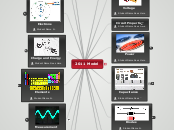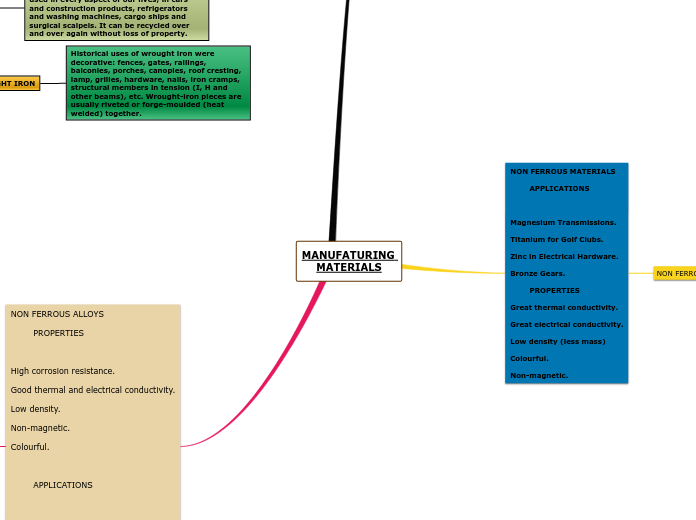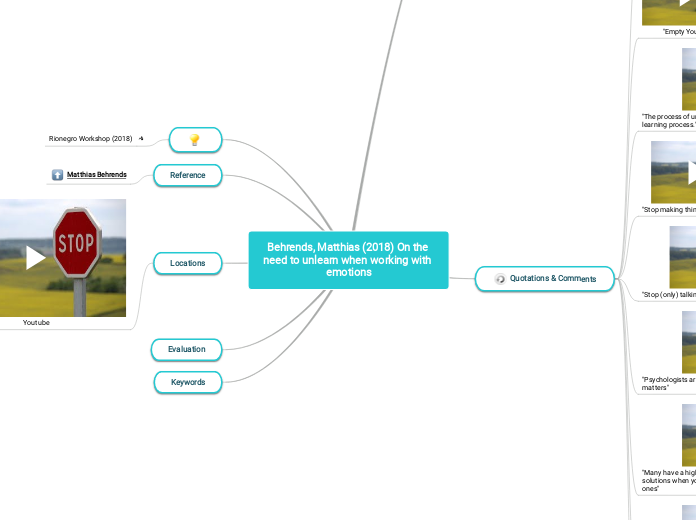2011 Model
Comments go here
Batteries
Why do batteries die?
Batteries die because the electrodes get coated with ions, stopping the chemical reaction
Resistance
Measuring resistance
Can we meausre the internal resistance of a cell phone, to determine how much of a load it acts like to a charger?
What causes resistance?
Resistance is related to friction. Even if the actual atoms aren't touching, their electromagnetic fields are overlapping.
Is it possible for a wire to have 0 ohms?
No.
How can you calculate total resistance?
In parallel, total resistance is lower than the lowest resistor.
When you string resistors together, the total resistance is the same as the sum of the individual resistances that current flows through (within 5%)
What's the effect of component resistance on component voltage?
More resistance changes the amount of voltage being used by specific components.
What's the effect of total resistance on total voltage?
More resistance does not change total voltage.
What's the effect of total resistance on total current?
Doubling resistance halves the current
The more resistance you have, the less current will flow.
Resistance restricts current
What determines how much resistance something has?
In a wire, the longer the wire, the more resistance it has
Length, width, and type of material determine resistance
Measurement
Efficiency
Efficiency in lighting is measured in lumens given off per watt dissipated
Is there such a thing as a milliohm meter?
Can we make an ESR meter somehow? We would need it to measure the resistance of the capacitor's leads.
Finding the rate of change (how fast things spike up)
Is it better to use two points that are close together, or far apart?
Is it the same everywhere on the graph?
Is it like an average?
What is RMS (root mean square)?
RMS is calculated like this: Vrms = 70.7% Vpk
RMS voltage is the way of solving/predicting for a DC voltage that is equivalent to AC to produce the same mount of power.
The textbook shows that RMS voltage can be used to calculate average power, but only for resistors. How is it different if capacitors are added?
How does the voltmeter measure AC voltage?
Voltemeter uses RMS to report AC, sinusoidal voltage
How accurate are measuring tools?
Every meter has a tolerance
Elements
What determines the type of element something is made of?
The number of protons determines the kind of element.
What is an element?
An element is something made of only one kind of atom. It is "pure" in the sense that there are not other kinds of atoms mixed in.
Charge and Energy
How do batteries get discharged?
Batteries lose their charge even when they are not connected to a depletion source
What's the difference between charge and energy?
In a circuit, energy is used up, even though charge is not. We know this because there's a difference in the energy level of the electrons between when they go into a component and when they come out.
How can an atom be charged?
An atom that gains electrons has an overall negative charge (more electrons than protons)
An atom that loses an electron has an overall positive charge (more protons than electrons)
Can an electron charge up or get discharged?
Electrons cannot gain or lose their charge, but atoms can.
What is charge exactly?
An electron has negative charge
A proton has positive charge
What is energy exactly?
Heat, light, sound, electrical and chemical are all kinds of energy
When a think is moving, we call its energy "kinetic." If the thing is holding still, we call its energy "potential."
Energy is the ability to move things (which is the same as the ability to do work)
Electrons
Valence shells
The best insulators have 8 valence electrons. It takes a lot of energy for current to flow because there are no holes available to gain electrons.
The best conductors have 1 valence electron because they have holes available to gain electrons
Trivalent and pentavalent tell the number of valence electrons in an atom
Electron shells have a certain capacity for electrons. This capacity can be calculated as 2n^2 (ex: 2, 8, 18, 32)
Why don't the shell number add up to 110, the number of elements? Is it because new elements have been discovered since the publication of the book?
for an electron to leave its valence shell, it needs to gain energy from an external source, for example heat.
Can this energy also come from the attraction of positive ions, or repulsion of other electrons?
Holes are vacancies in the valence orbit. They can be created by the departure of a valence electron. Some atoms may have holes already.
What if it's already a negative ion, and it loses that extra electron -- is this still considered a hole?
A free electron is one that has left the valence shell and gone into a bigger orbit called the conduction band.
What is a valence shell?
Valence electrons are the electrons in the atom's outer band.
What keeps electrons orbiting the nucleus?
Electrons furthest from the nucleus are less strongly attracted by the protons in the nucleus, so they are the easiest for other atoms to pull away
Can electrons leave their atom?
If an atom loses or gains an electron, it is called an ion.
An atom that gains an electron has a negative charge.
An atom that loses an electron has a positive charge, and will attract loose electrons.
Yes. An electron can leave its atom and join another atom. The "losing" atom now has an extra proton; the "gaining" atom now has an extra electron.
What can make an electron leave its atom?
Chemical reactions can make an electron be lost, gained, or shared.
Where are electrons located?
Not all electrons are the same distance fromthe nuclus. There are different orbits, some closer to the nucleus, some farther away.
An electron's orbit can also be called a "shell" or a "cloud"
An electron can be shared by two different atoms
They orbit the nucleus of the atom
How much charge does an electron have?
An electron's negative charge cancels out a proton's positive charge
What is an electron?
It's a negatively charged particle in an atom
Protons
Can protons move from atom to atom?
For protons to move from atoms to atom in large quantities, it would have to be in a nuclear reactor.
What is a proton?
A proton is a positively charged part of an atom's nucleus.
Atoms
What's between an atom's nucleus and its electron shells?
There could be energy fields, but that's just a force of attraction or repulsion, not an object, not made of atoms.
It's empty space.
Between the nucleus and the electrons, there is no "stuff".
Can neutrons leave their atom?
Yes. An atom that loses or gains a neutron is called an isotope.
What's the relationship between an atom's number of protons and number of electrons?
If an atom has the same number of protons and electrons, its charge is balanced.
It's common for an atom to have the same number of protons as electrons.
Is everything made of atoms?
Objects in daily life, on earth, are made of atoms.
How small can you break down a material before it doesn't have the properties of that material?
A single atom of copper still acts like copper. If you took one of the protons inside copper, though, that proton by itself would not act like copper.
You can break a material down to a single atom. For example, an atom of ocopper has the properties of copper.
What is an atom?
An atom is a group of protons and neutrons that are close to each other in a nucleus, and the electrons that orbit that nucleus
Computers
Firmware
When you write a program to a chip, what physically changes?
Processors
What's the maximum number of cores available on a processor?
What is a core?
With a really good processor, would you need better RAM (or other hardware upgrades) to run the processor?
What is a cache?
Can you have external processors?
Can I tell my computer to run as many cores as I want for certainthings?
Are there specific processors for certain things (gaming, photoshopping, editing)?
What is the ideal temperature for a processor?
Can any processor be used with different motherboards?
Does a higher end processor generate more heat?
Electronic Communication
What is a waveguide?
A waveguide is a hollow metal device that guides waves such as radio, light, or sound around corners and keeps them focussed on one spot.
Diodes
What's inside a diode?
Silicon is the most common semiconductor because it is the 2nd most abundant material on earth, ex. sand.
What's a semiconductor?
How is the silicon crystal's structure relevant to its operation?
Semiconductors have 4 valence electrons, ex. germanium, silicon, and carbon, because they have some holes but not as many as condctors
Why are carbon resistors not diodes? Is it because they're made of a solid piece, not two pieces with a junction?
Is a lightbulb a semiconductor? It changes its resistance when current flows through it.
Is it just a very conductive piece of material? Or is it partly conductive? Does it mean that it only conducts one way?
The cathode is made of n-type semiconductor, which contains pentavalent impurities. The anode is made of p-type semiconductor, which contains trivalent impurities.
Differences between types of diodes
LEDs
LEDs are 1/3 more efficient than incandescent bulbs.
Does LED current spike up more than rectifier current?
Zener diodes
Does the set voltage where a zener starts to conduct relate to its model number?
Zener diodes are able to conduct in reverse, if a set voltage is reached (-11.5 to -12V)
What causes the turn on voltage of a zener?
Are there other diodes besides zeners where current flows backwards?
What is the meaning of the diode's model number? Does it tell you the voltage it turns on at?
How do diodes work?
Diode Resistance
Does the light turning on make the resistance go down?
Do diodes have resistance in one direction and open load in the other?
LEDs and rectifiers both conduct forwards
Can we measure the revse current?
LEDs and rectifier diodes don't conduct in reverse between -1V and -22V.
What causes the diode to conduct better in one dicrction than the other?
Diodes with current flowing K->A have low ohms, low voltage drop, current passes through easily. Diodes with current flowing A->K have high ohms, low current.
How much more positive does one side of the diode have to be for current to flow?
Zener and rectifier diodes both conduct forward and have a turn on voltage less than 1V.
Safety issues about diodes
Will an LED work without its casing? Is it dangerous?
Without its casing, would an LED emit light at a different angle?
Without the casing, would the LED be a different colour?
Would it be dangerous if you touched it?
LED casing is not needed for current to flow. It is unclear what effect the casing has on the light.
What is the definition of a diode?
A diode is a one-way path for current from anode to cathode
A diode is a device with two active terminals (anode and cathode) through which current passes more easily in one direction than in the other.
Which direction does current flow in a diode?
Diode current flows from anode to acathode.
Capacitance
Capacitor voltage
What happens if you charge a cap to a certain voltage, then connect it to a power supply of a lesser voltage?
Do we need superposition to analyze capacitor circuits, since they act like batteries when they discharge?
Capacitors in AC circuits
Why did the bottom of the function appear to have an oddly curved bottom, was it caused by a rapid voltage spike?
What determines a capacitor's voltage?
Do big caps have a lot of resistance, and small caps have very little resistance?
The larger capacitor has less voltage dropped across it.
Why does V1 + V2 sometimes equal VT and sometimes not? Is it because of phase shift?
What happens if you combine a diode with a capacitor? Does that make it save to use a polarized capacitor with AC?
Combining capacitors
What happens if you combine two capacitors together -- would one of them charge the other?
Model presentation by June
Capacitors in DC Circuits
In an RC circuit, why does the resistor's voltage show up as a straight line with spikes?
In the RC circuit, does the capacitor take up all the voltage? Is that because it's charging?
Model presentation by Jordan
In an RC circuit, even VT is not a square wave. It's rising slightly across the flat part. Why?
Why is VC1 not a square wave when the signal generator is set to square wave? In an RC circuit, VC1 is more like a shark fin.
Did low Hz cause the triangle mystery? Or low voltage? Or...?
Polarized capacitors
We know that polarized capacitors can blow up in reverse polarity. Can they also blow up in correct polarity if you exceed some parameter -- maybe wattage?
Why is it not possible to make large capacitors non-polarized?
Can you use a polarized cap with AC if there's a big enough DC offset?
Other components
Can other things have capacitance?
What are caps made of?
Are all capacitors made the same way?
Are there any other ways to make a cap?
Are they all made from the same materials?
Dielectric
What is the dielectric made of?
Waht is the relationship between "parallel conductive plates" and "insulating material dielectric". What do they do together and what do they cause?
What is a dielectric exactly?
Why don't caps work with AC, if electrons can't flow through the dielectric?
What effect does the dielectric have on its ability to store?
Diodes and caps appear to have the same layout. What's the difference?
How do caps charge and discharge?
In a power supply, can the filter capacitor charge up on only one side?
Discharging
Can it self discharge, like a battery? If so, how does this happen?
Charging Up
Do different caps take different amounts of time to charge?
Maybe electrons aren't really going through the cap -- the cap is absorbing them and putting out its own electrons. Is this true?
Can a cap be charged up both ways?
How much charge can a cap store?
When cap is connected to a battery, how does it make a difference when they are two same metals?
Why does a cap store charge, when other components like diodes don't?
What causes and releases the charge?
What makes electrons flow from the + to the - side?
What exactly is charging up and being stored into?
Does a cap have to charge up through a resistor?
Does a capacitor store charge or energy?
What is the electric field exactly?
How/Why does an electric field store energy?
Where does the electric field come from?
How does electric field discharge electrons?
Capacitor resistance
In AC, does a capacitor take up all the voltage because it acts like an open?
Not necessariy. In AC, increasing the frequency or capacitance makes the resistance of the capcitor go down (and vice versa) according to Xc = 1/ (2 pi f C).
What is physically occurring within the capacitor that causes the ohms to increases/decrease; does it have to do with the dielectric?
Are there other factors that affect a capacitor's resistance under AC?
How accurate is this?
What is the phase shift they speak of in the text, what does it have to do with resistance?
How does this compare with the capacitor's resistance to DC?
Does this work for polarized capacitors? After all, they can explode if they are used with AC.
Maybe the ohmmeter doesn't measure the actual resistance of a capacitor because of the capacitor's charge. Is this true?
The metal leads of a capacitor have very low resistance but you need an Effective Series Resistance meter to measure it.
Can we measure the cap's resistance while it's discharging?
Can we check the voltage and ohms of charged and uncharged caps?
Maybe the ohmmeter can never reach the capacitor's resistance, because every time the ohmmeter increases its current, the cap increaes its resistance a bit more.
Does the capacitor's resistance change when current flows?
Is the ohmmeter itself charging the cap?
Is the ohmmeter charging the cap at the rate that it puts out current?
Does a charged cap fight with the ohmmeter's current, the same way as two batteries that oppose each other prevent current from flowing?
If this is true, the resistance measurement should be affected by whether the cap is charged or not. Can we test this?
Is there a way to measure the resistance of a cap?
Model presentation by Ryan
Capacitor characteristics
What is a capacitor's max. permissible ripple current?
The dielectric is an insulator. How can current leak through?
Is ripple current a characteristic, or a safety maximum?
How is ripple factor different from leakage current?
Model presentation by Brandon
What does it mean on the data sheet by "characteristics at low temp"?
Capacitors change their capacitance in relation to temperature. When temperature increases, some capacitors increase their capacitance and others decrease; it depends on the material they are made of.
What causes this?
What is a "dissipation factor"? It's on the data sheet of a polarized cap.
Model presentation by Caelan
Max Voltage
Is the max voltage only for DC or also for AC?
What happens exactly when you exceed the capacitor's max voltage rating? Do ceramic caps explode, or smoke, or just not work properly?
If you exceed a cap's rated voltage, there is a possibility it might explode or damage the dielectric.
What is the formula for max voltage?
How does excess voltage dmage the dielectric?
What determines a capacitor's value?
What determines how much charge a capacitor can store?
The higher the permittivity of the dielectric, the more electrons a capacitor can store for a given voltage.
Permittivity is a measure of how strongly a material allows protons and electrons to attract each other.
When the dielectric is polarized, the atoms have their electrons shifted to one side, which makes one side of the atom more negative and one side more positive.
What are the markings on a capacitor?
What is a farad?
Model presentation by Jake
What causes more capacitance?
C = Q/V --
Q represents a coulomb. What is this?
Is this V the voltage of the power source or the voltage across the component?
Capacitance is difference of energy "per unit of charge". What does that mean exactly?
How does current flow in a capacitor?
If a capacitor is partly charged up, is it possible for current to only flow in half of the circuit (maybe from the positive plate to the battery, but not from the battery to the negative plate)?
Does the dielectric give electrons to the positive plate?
How do electrons flow if insulator stops them? Is the dielectric like a break in the circuit?
Asked by Brandon, Feb 1 2012
does current stop flowing after 5 tau? Does that mean there would be no voltage across a series resistor?
The dielectric has high resistance and prevents electorns from flowing through the cap, unless the breakdown voltage is exceeded.
What is a capacitor, and what is it used for?
Model presentation
If there's a difference in energy across two points and it has charge, it's a cap?
Power
What is power exactly?
Power is the amount of energy being used per second (in Watts)
Circuit Properties
What does "ground" mean exactly?
Ground can mean two things: either the default point that voltage is measured from, or a part of the circuit connected to the earth
What is a parallel circuit?
Components are in parallel if they are connected at both ends
What is a series circuit?
Components are in series if they are connected with a single path
Voltage
How do you get rid of ripple on a DC voltage?
What effect do parallel components have on voltage?
Parallel components will have the same voltage (within 2%)
What's the effect of total voltage on total current?
If you double the voltage, you double the current. (within 3%)
Current
What is a coulomb exactly? It appears in the definition of a farad as "a coulomb is 1 ampere second." Is an ampere second like an amp-hour (in a battery)?
Why don't electrons flow all the time?
Electrons don't flow all the time because, without a complete circuit, the electrons are not attracted to something more positive, so they have nowhere to go.
What happens to current in a parallel circuit?
The current is not necessarily the same everywhere in a parallel circuit. Each branch's resistance depends on its resistance, and can be calculated according to Ohm's law.
What is "direct current" (DC)?
Direct current is always on when there is a power source.
Does current decrease every time it goes through another component?
No. Current is the same everywhere in a series circuit.
Which side of a source do electrons come from?
Electrons flow from the "ground" (little arrow) terminal on the circuit trainer to the "positive" side.
Electrons flow from the negative side of a battery to the positive side









